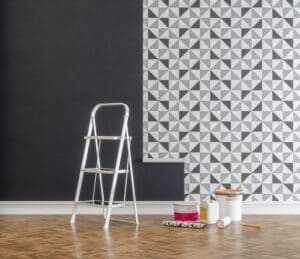
To wallpaper the walls well, you need not only the right pattern and quantity of wallpaper. It is also important to carefully prepare the surface on which the wallpaper will be applied. It must ensure good adhesion, or in other words, prevent the wallpaper from peeling off the walls in the future.
Although wallpapering, just like painting walls, can be done on your own, it does not mean that the process is very simple. During it, remember the most important rules that guarantee the aesthetic appearance and durability of the solution used. First of all, it is important that the wallpaper is placed on an even surface . Otherwise, it may quickly start to peel away from the walls. Before wallpapering, the surface must be leveled. However, doing this by laying wallpaper is definitely not the best idea. A layer of wallpaper will not cover the irregularities, it will only highlight them even more. It is also worth choosing the right glue for the wallpaper so that the wallpaper sticks to the wall as best as possible.
Important aspects of wallpapering
The evenness of the substrate is not the only aspect that is important when laying wallpaper. Factors such as age, dryness and cleanliness are equally important. It is best, of course, when the wallpapers are placed on a new, freshly plastered wall . However, this does not always happen, so before applying wallpaper, you should clean and dry the walls well. Otherwise, harmful microorganisms such as fungi or mold may develop in the future on a damp or dirty surface under the wallpaper.
An obvious rule is that if we want to cover the walls of a room that has already been used with wallpaper, we must remove the previously applied layer of covering. Regardless of whether it is paint or wallpaper, it must be removed before new material can be installed. We should also remember that before applying wallpapers, the walls that are to be wallpapered should be primed . This is a treatment that will bring positive results not only in the short term, but also in the long term. It will both ensure greater durability and allow for easier removal of wallpapers during the next renovation.
